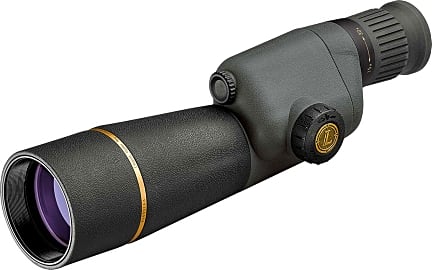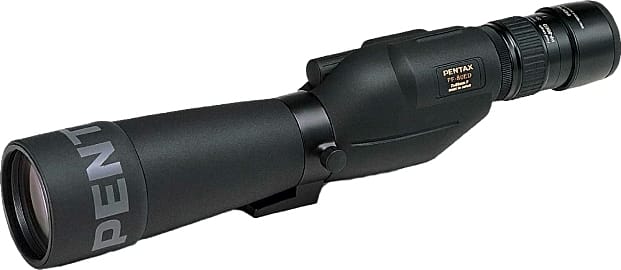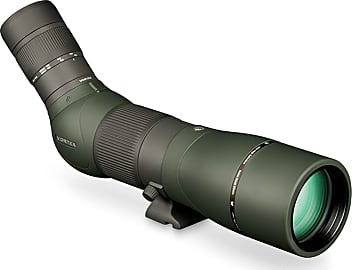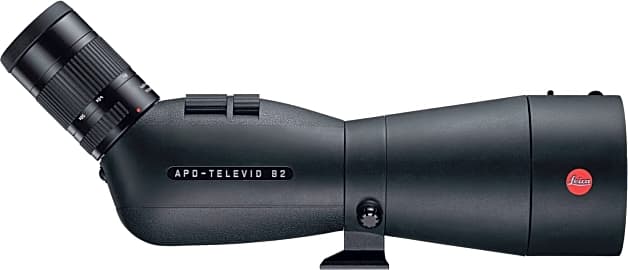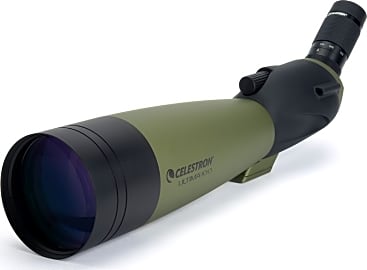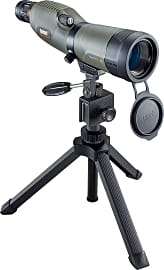The 8 Best Spotting Scopes

This wiki has been updated 41 times since it was first published in February of 2015. If you are a hunter, marksman, nature watcher, or outdoor photographer, you'll find our list of spotting scopes, ranked by magnification, ease of use, and durability, includes the perfect instrument for your next outing. Whether you need to identify bullet holes in a downrange target, spot a wild animal in the bush, or simply take stunning photos from a distance, there is a model here for you. When users buy our independently chosen editorial picks, we may earn commissions to help fund the Wiki.
Editor's Notes
February 19, 2021:
There are lot of new additions to our recommendations this year, which also means we eliminated a few of the ones we previously picked. There are various for this. In the case of the Redfield Rampage 20-60x60mm, we removed it both for availability issues and the fact that it struggled with seeing small details clearly beyond the 100-yard range. We also removed our review of the Vortex Optics Razor HD 16-48x65, but that was only so we could highlight the various models in the in line, all of which perform well within their intended range.
Our new additions include the Zeiss Victory Harpia 95 and Leica APO-Televid 82 Angled, both of which are top-of-the-line offerings ideal for serious hobbyists. The former features a 90-millimeter effective lens, and the former an 82-millimeter one. These are both large enough to excel in low-light situations. They are also both fully waterproof and rugged enough to stand up to all kinds of abuse. Providing optics of similar quality, though at a lesser price point, and actually offering more magnification than the Televid 82, is the Pentax PF-80ED. It is worth noting that its effective lens is slightly smaller, so while it will impress most people, those used to best-in-class scopes may find that it doesn't gather enough light in some situations.
Proving that you can also get decent optics at a reasonable price, we have the Celestron Ultima 100. However, while it offers powerful magnification and produces a crisp image, its weight and size can make it rather cumbersome to carry and use at times.
June 21, 2019:
Spotting scopes are a must for hunters, birdwatchers, and anybody who shoots at long-distance targets. Last year, the Vortex Diamondback claimed our #1 spot, and while it is still a great scope it did drop down a bit and now takes the #5 spot. Our new #1 item, the Vortex Razor HD, is still made by the same company, but beats the Diamondback considerably in the component department. The Vortex Razor HD features an extra-low dispersion glass and anti-reflective coatings on all air-to-glass surfaces that give it impressive brightness and essentially no chromatic aberrations. The Pentax PF-80ED also as an extra-low dispersion glass, plus a very high level of water resistance. With a retractable lens shade and professional-grade BAK4 prism, and coming with a tripod and various other accessories, the Redfield Rampage offers one of the best values in the field. The Bushnell Trophy Xtreme is also a nice value buy, but some of the included components aren't as high quality as those that come with the Rampage.
Of all the models on our list, the Celestron Ultima offers the most powerful magnification, at up to 66 times, though the images in it will be less crisp than what our top few picks offer at their maximum zoom range. Anybody who hikes in the field for long distances, carrying their scope the entire time, should consider the Leupold GR Gold Ring Compact. At just around 1.5 pounds, it is exceptionally lightweight, though we do want to mention it is only capable of 30 times magnification.
Special Honors
Minox MD 80 ZR Intended for tactical applications, the Minox MD 80 ZR has a straight barrel and a compact design to allow for covert use while lying down. It also features reticle similar to ones found in rifle scopes, making it ideal for shooters doing recon on long-range targets. minox-usa.com
Hensoldt Spotter 60 The Hensoldt Spotter 60 offers variable magnification from 20 to 60 times, and features a mil-dot style reticle that changes size in conjunction with the magnification. Plus, its brightness continuously adjusts as the ambient lighting changes. It is available in a black or sand-colored option. hensoldt.net
Scoping Out Versatility
Some can even be used in conjunction with a digital camera to take long-distance photographs.
If you're a photographer, hunter, or just love studying the environment around you but are limited by your conventional pair of binoculars, then a spotting scope may be just the tool for you.
Unlike large astronomical telescopes that require heavy, specialized mounting equipment and produce reversed/upside down images, a spotting scope is a small, portable telescope with added optics designed to present you with an upright image. Such spotting scopes are optimized for terrestrial activities, such as birdwatching, wildlife observation, scenery viewing, hunting, ship watching, and surveillance. Although their degree of magnification isn't as powerful as larger telescopes used for stargazing, spotting scopes still provide a greater degree of magnification than what you would ordinarily experience with a pair of binoculars. Some can even be used in conjunction with a digital camera to take long-distance photographs.
The light-gathering power and resolution of a spotting scope is determined by the diameter of its refracting objective lens. The objective lens is typically between 2-3 inches in diameter with an image erecting system that uses any combination of prisms, generally Porro or roof, image erecting relay lenses, and a removable/interchangeable eyepiece to deliver varying degrees of magnification power, depending on the activity you've chosen. Spotting scopes can use other types of designs as well, including the Schmidt and Maksutov optical assemblies.
These devices usually include some type of mounting hardware for use with tripods and feature ergonomically-designed knobs for easy focus adjustments. Spotting scopes can include several interchangeable eyepieces or they may come with a single eyepiece that gives you variable zooming options.
What To Focus On
One thing to bare in mind if you're just starting out is that a high degree of magnification doesn't automatically mean that the spotting scope you go with is the best choice. For example, if you live at low altitudes and experience frequent humidity or high winds, you may find that your spotting scope isn't giving you the highest image quality. That said, ambient weather conditions (heat, humidity, high winds, dust, and glare) will definitely have an impact on overall image quality. The greater the magnification, the more drastic the reduction in image quality may appear when weather conditions aren't optimal. That doesn't mean you shouldn't look for a spotting scope with variable magnification, but it's something to be aware of. Just be sure that you're going with the right type of spotting scope for your environment. An astronomical telescope would not be the right choice for birdwatching, as an example.
The greater the magnification, the more drastic the reduction in image quality may appear when weather conditions aren't optimal.
Pay attention to the description of the lens coatings when shopping for a spotting scope, as this also impacts magnification quality. The idea behind using lens coatings is that they improve light transmission, which is important for a high-magnification instrument like a spotting scope. Many spotting scopes have lenses that are fully coated, multi-coated, and fully multi-coated. Fully multi-coated lenses are found on most of the premium-grade models.
If you wear eyeglasses, make sure the spotting scope you choose provides adequate eye relief. A good range is around 14mm so that you'll be able to see the entire field of vision when wearing thick eyeglasses with heavy lenses.
Other spotting scopes offer built-in sunshields, which comes in handy if you do a lot of birdwatching in the middle of the day.
A Brief History Of The Spotting Scope
The first refracting telescopes were invented in the Netherlands around 1608 by 2 spectacle makers named Hans Lippershey and Zacharias Janssen, and Dutch instrument maker Jacob Metius of Alkmaar.
Galileo Galilei developed his own refracting telescope in 1609 using a convergent (plano-convex) objective lens and a divergent (plano-concave) eyepiece lens. The Galilean telescope offered a design with no intermediary focus, which resulted in a non-inverted and upright image. This helped to pave the way for the development of modern spotting scopes and their upright object orientation found today.
This development allowed for both a wider field of vision and improved eye relief over the Galilean telescope, but the resulting image would be inverted and not upright.
By 1611, German astronomer and mathematician Johannes Kepler improved upon Galileo's refracting telescope design with his use of a convex-shaped lens as the eyepiece instead of a concave one. This development allowed for both a wider field of vision and improved eye relief over the Galilean telescope, but the resulting image would be inverted and not upright.
In 1668, Isaac Newton developed the first known functional reflecting telescope. The development of reflecting telescopes continued throughout the 18th and 19th centuries. As reflecting telescopes grew larger in size, their reflectivity suffered as did their speculum metal mirrors, which had to be removed and polished constantly.
The first spotting scope appeared as early as 1903. Today, most spotting scope manufacturers offer scopes in both apochromatic and non-apochromatic versions. Apochromatic spotting scopes contain a specially-designed lens that helps remove chromatic aberrations, which are fringes of color along boundaries separating both the dark and bright portions of a given image. Apochromatic scopes represent a cutting-edge form of the evolution of optical viewing technology that will ensure your images remain as crisp as possible without excessive interference.


